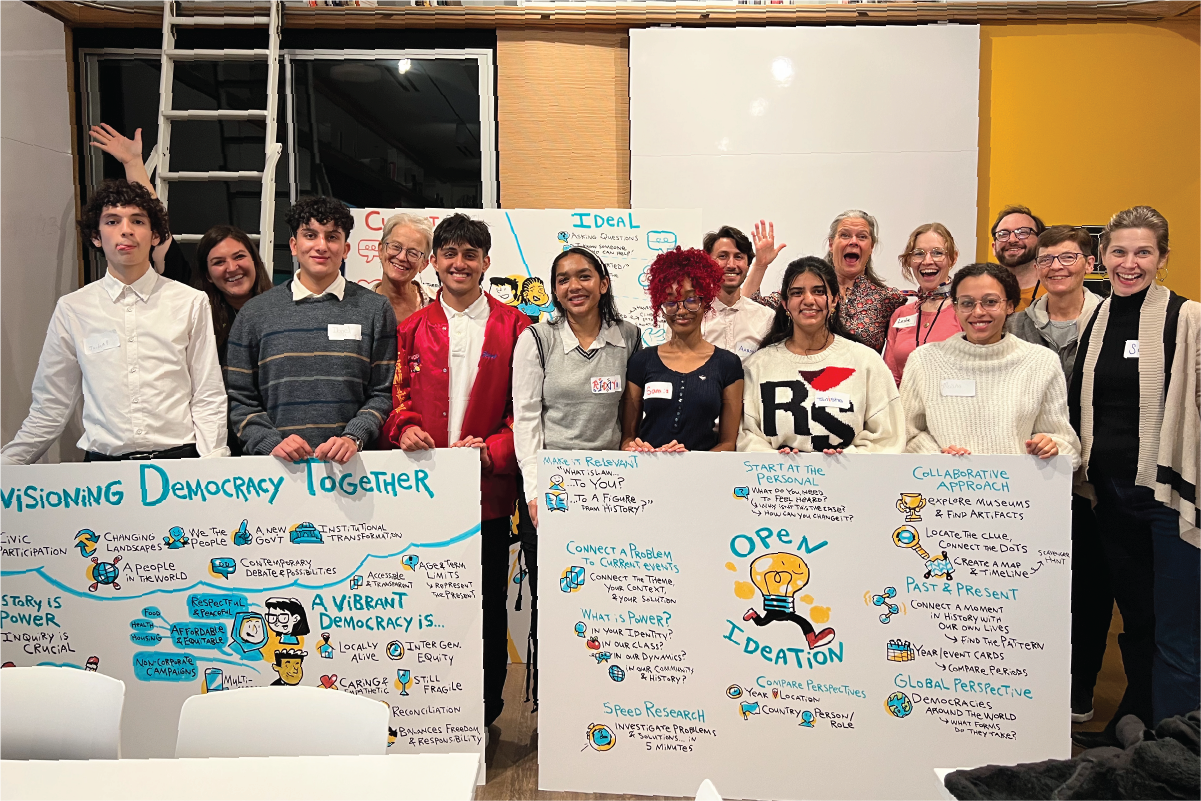We’re 18 months into the age of human-computer interaction, where reasoning engines, new forms of co-intelligence, are accessed through natural language. It’s clear that generative AI will reshape work and learning in ways we’re just beginning to understand. Announcements in May (from OpenAI, Microsoft, and Google) reinforced the cadence of new capabilities every six months.
Leading school systems are responding with tutoring, chatbots, teacher assistants, and project authoring. In February, Digital Promise reviewed the guidance offered by seven states. They all encourage AI literacy among teachers and students.
Start with Fun, Then Get to Work
On getting started with AI, Warton prof Ethan Mollick suggests starting with fun, “Go to Suno or Udio and make a song.”
Wes Kriesel, an Administrator of AI and Innovation at Orange County Department of Education (serving 440,000 public school students in SoCal) said, “I think being playful, being joyful, lead with joy.” Kriesel produces the OrangeJuice.ai Podcast with three guiding values: inclusiveness, storytelling, and innovation.
Kriesel prefers AI Fluency over AI Literacy because it’s “not just understanding but truly engaging with AI, enabling educators and learners to co-create, adapt, and innovate.”
He likes to introduce educators sitting side by side, making AI part of their experience. Kriesel invokes Mollick, “Invite AI to everything you do!” Mollick estimates that it takes about 10 hours of use to learn what the AI models do. “To learn to do serious stuff with AI, choose a Large Language Model and just use it to do serious stuff – get advice, summarize meetings, generate ideas, write, produce reports, fill out forms, discuss strategy – whatever you do at work, ask the AI to help.”
Mollick urges using one of the most advanced frontier models: Claude 3 Opus, Gemini 1.5, and GPT-4o because they connect to the Internet, read files, make images, see images and videos, run code, and do data analysis. If you want background on how large language models work, Mollick recommends the Jargon-Free Guide and blog by Stephen Wolfram and 3Blue1Brown video.
AI Literacy Frameworks
“AI literacy includes the knowledge and skills that enable humans to critically understand, use, and evaluate AI systems and tools to safely and ethically participate in an increasingly digital world.” The Digital Promise AI Literacy Framework, pictured below, includes three components: Understand, Use, and Evaluate.
Other sector leaders have published useful guides for school adoption:
The Middle States Association recently announced Responsible AI in Learning (RAILS), a framework for safely and effectively deploying AI in schools. Thirty schools are piloting the self-study modules that will result in a series of endorsements, allowing schools to signal their progress.
AI Literacy Content for K-12 Students
The Penninsula Plan
Washington’s Penninsula School District was early in stating its principles and beliefs about artificial intelligence. Executive Director of Digital Learning Kris Hagel has been providing guidance regionally and nationally for years.
Building on two years of professional learning on AI, Hagel is offering five summer learning modules for teachers to choose from:
- What is AI: a foundational background on safe and effective use.
- MagicSchool.ai: a tool (used by 75% of Peninsula teachers) that can help with many different tasks (but not as the first introduction to AI).
- AI & UDL: expanding on Universal Design for Learning with a primary focus on flexible methods of knowledge consumption and ways to show your learning.
- Advanced AI utilization: building your own chatbots that are specifically targeted to your class of subjects.
- AI for efficiency and wellness: how can using AI reduce the monotony of some of the tasks teachers do with a focus on how can that free them up to build a better work/life balance?
“We know we still have some teachers who are hesitant, but also making it imperative that all students get the opportunities to learn and explore with AI,” said Hagel.
School principals are primary instructional leaders in the Peninsula. Next year they will be advancing their implementation of UDL and AI with a focus on feedback and formative assessment. The new high school ELA curriculum incorporates AI literacy.
Behind the scenes, Hagel is aligning district operations and data governance with AI deployment using the CoSN/CGCS Maturity Model. They are also updating their student handbook to reinforce how AI can and should be used in the classroom and are at work building a chatbot around UDL principles as an open curriculum, allowing teachers to ask questions specific to their school.
St Vrain Valley Schools is another district that took an invitational approach to supporting teachers with Exploration AI which encompassed:
- Self-directed, gamified learning that encouraged the use of a range of AI tools
- EdCamp Pop-Ups: monthly sessions that emphasize dialogue and shared learning, demonstrations, and hands-on experimentation.
- School Champions who weave AI strategies into their site-based professional development days and provide local on-demand support.
This year St Vrain is adding Elementary AI Literacy based on the AI+Me series designed to introduce the 5 Big Ideas of Artificial Intelligence (AI4K12) to young learners.
Add AI Literacy to summer professional learning. Make AI Literacy a priority for every secondary learner this fall.





